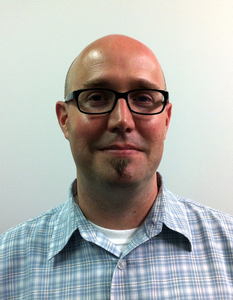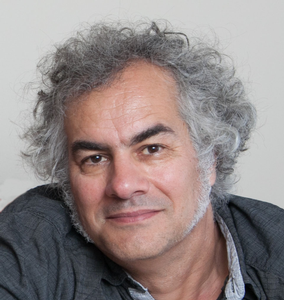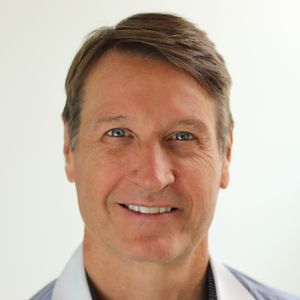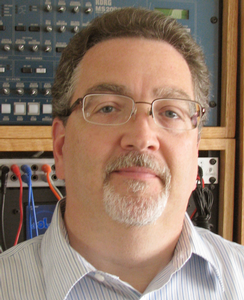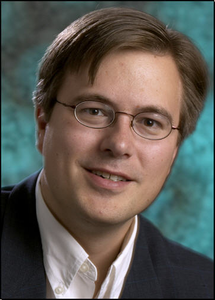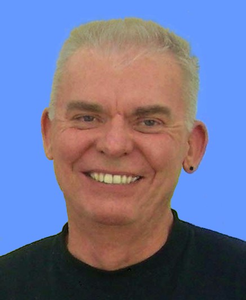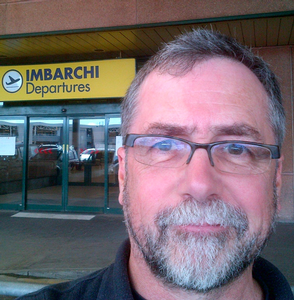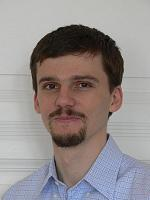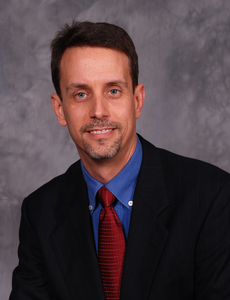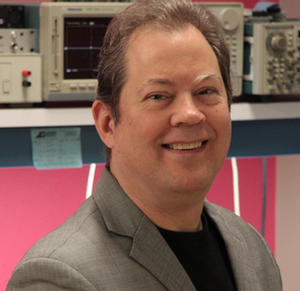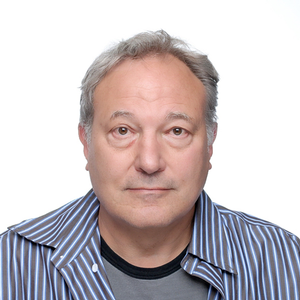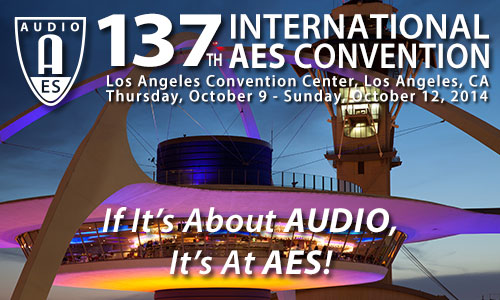
AES Los Angeles 2014
Product Design Track Event Details
Thursday, October 9, 9:00 am — 10:00 am (Room 404 AB)
Networked Audio: N1 - A Primer on Fundamental Concepts of Media Networking
Presenter:Landon Gentry, Audinate - Portland, OR, USA; Sydney, NSW, Australia
Abstract:
This session will cover the OSI model and how data travels through network layers (a “networking stack”): Layers 1, 2, 3 and 4; Cables, MAC Addresses, IP Addresses, and networking protocols. An overview of some networking standards and standards organizations, including the IEEE and the IETF. An introduction to IP data networking . . . it is how everything is already wired together. Identify some of the advantages and limitations of IP data networks with respect to real-time media. A brief discussion of IP networking standards and protocols that can be leveraged for media networking.
Thursday, October 9, 10:15 am — 11:45 am (Room 404 AB)
Networked Audio: N2 - History of Digital Audio Networking
Presenter:Kevin Gross, AVA Networks - Boulder, CO, USA
Abstract:
Digital audio networking was pioneered by the telephone companies in the 1960s. Digital audio came into use in professional applications starting in the late 1970s. Standard digital interconnect for professional applications emerged in the 1980s. It wasn’t until the mid-1990s that real-time network distribution as we currently know it was born. This tutorial will follow the evolution of real-time digital audio networking, examining design decisions and changes in the underlying network technology that has enabled advancement to the current state of the art. Some of the specific networking technologies to be covered include: VoIP, CobraNet, MaGIC, Ethersound, A-Net, AES47, Livewire, AES50, ACIP, Dante, AVB, Q-LAN, RAVENNA and AES67. Historical perspective on the topic should give attendees an indication of where audio networking is headed.
 | This session is presented in association with the AES Technical Committee on Network Audio Systems |
Thursday, October 9, 11:15 am — 12:45 pm (Room 402 AB)
Product Design: PD1 - The Secrets of Analog Design
Presenters:David Derr, Empirical Labs - Parsippany, NJ, USA
Dave Hill, Crane Song - Superior, WI, USA; Dave Hill Designs - Superior, WI, USA
Hutch Hutchison, Freelance - USA
Abstract:
Navigating the secrets of analog can be both frustrating and rewarding. In the design of an analog product there are many different ways to create the design. The choices that are made determine the sound, manufacturability, and cost of the device. With clever choices one can create a product with a unique and desirable sound while controlling the undesired factors such as cost, manufacturability issues, and reliability. We will look at a number of choices to create the same function and how the choices will affect the sonics of the device. In the market these choices can result in a product the fits the studio to the Concert Tour. What we work to avoid is a product that has so-what characteristics. Unique circuits have unique sounds; in this workshop the panel will explore some of the mystery and help attendees better understand the choices the options they have in designing in the analog domain.
Thursday, October 9, 2:15 pm — 2:45 pm (Room 406 AB)
Product Design: PD2 - Welcome to Top Gun for Product Designers
Chair:Scott Leslie, PD Squared - Irvine, CA, USA
Abstract:
Following on from the special workshop this morning on "The Secrets of Analog Design," this session will introduce the theme and sessions for the rest of the PD Track for AES LA. The curriculum has two themes this year. Some sessions will focus on great audio design topics as AES has done in the past.
The second and new theme is about how to develop great products in a global sourcing and engineering environment. Today’s engineers and managers must develop a skill set to deal with the complex world of global availability of:
1) Off-shore manufacturing and supply chain
2) Design services
3) Engineering services
4) Off the shelf and semi-custom subassemblies
Topics in this theme will provide valuable insight for understanding how to find, specify, integrate, and manage these disciplines into successful end products.
This session is to provide an overview of the current global sourcing phenomenon and direct you to the PD track sessions that can leverage your talents in new ways to get products to market that are huge successes and meet your company’s business objectives.
Welcome to Top Gun!
Thursday, October 9, 2:30 pm — 5:30 pm (Room 309)
Paper Session: P4 - Transducers—Part 1
Chair:
Joerg Panzer, R&D Team - Salgen, Germany
P4-1 The Dynamics Detection and Processing Method for Preventing Large Displacement Transducer Damage Problem—Yu-Ting Tsai, Feng Chia University - Taichung, Taiwan; Jin H. Huang, Feng Chia University - Taichung, Taiwan
The method for avoiding the large displacement damage problem of the transducer diaphragm is presented in this study. To account for the displacement and supply current, a set of transduction equations with parameters for the receiver is established. The numerical solver is used to obtain the displacement values from the transduction equations of the transducer and then limit the peak of the current and coil velocity by using the dynamics limiter. Once the peak limited process is done, the safe input voltage can be obtained satisfactorily for preventing the impulse damage of displacement. The numerical and experimental results indicate that the proposed method features high efficiency and ability applied in the wide application of transducers.
Convention Paper 9113 (Purchase now)
P4-2 Specifying Xmax for Micro-Speakers and Smart Amplifiers—Géraldine Vignon, NXP - Leuven, Belgium; Shawn Scarlett, NXP - Nijmegen, The Netherlands
Smart amplifiers are a new generation of amplifiers using a real-time feedback loop to ensure the speaker stays within its physical limits, and they are capable of delivering significantly more output power than previously possible. This jump requires the definition of new performance ratings for micro-speakers. The purpose of this paper is to recommend test procedures and methods for the specification of a maximal speaker-membrane excursion (Xmax) suitable for an application that uses a smart amplifier. The proposed set of criteria to characterize this usable excursion should allow micro-speaker vendors to provide optimized and reliable solutions to their customers.
Convention Paper 9114 (Purchase now)
P4-3 Comparative Study of Si and SiC MOSFET for High Voltage Class D Audio Amplifiers—Dennis Nielsen, Technical University of Denmark - Kgs. Lyngby, Denmark; Arnold Knott, Technical University of Denmark - Kgs. Lyngby, Denmark; Michael A. E. Andersen, Technical University of Denmark - Kgs. Lyngby, Denmark
Silicon (Si) Metal–Oxide–Semiconductor Field-Effect Transistors (MOSFETs) are traditionally utilized in class D audio amplifiers. It has been proposed to replace the traditional inefficient electrodynamic transducer with the electrostatic transducer. This imposes new high voltage requirements on the MOSFETs of class D amplifiers and significantly reduces the selection of suitable MOSFETs. As a consequence it is investigated if Silicon-Carbide (SiC) MOSFETs could represent a valid alternative. The theory of pulse timing errors are revisited for the application of high voltage and capacitive loaded class D amplifiers. It is shown that SiC MOSFETs can compete with Si MOSFETs in terms of THD. Validation is done using calculations and a ± 500 V amplifier driving a 100 nF load. THD+N below 0.3% is reported.
Convention Paper 9115 (Purchase now)
P4-4 Adaptive Stabilization of Electro-Dynamical Transducers—Wolfgang Klippel, Klippel GmbH - Dresden, Germany
A new control technique for electro-dynamical transducer is presented that stabilizes the voice coil position, compensates for nonlinear distortion, and generates a desired transfer response by preprocessing the electrical input signal. The control law is derived from transducer modeling using lumped elements and identifies all free parameters of the model by monitoring the electrical signals at the transducer terminals. The control system stays operative for any stimulus including music and other audio signals. The active stabilization is important for small loudspeakers generating the acoustical output at maximum efficiency.
Convention Paper 9116 (Purchase now)
P4-5 Retrofitting a Complex, Safety-Critical PA System for Periodic Testing—Gregor Schmidle, NTi Audio AG - Schaan, Liechtenstein; Philipp Schwizer, NTi Audio AG - Schaan, Liechtenstein; Winfried Häns, Kernkraftwerk Gundremmingen GmbH - Gundremmingen, Germany
This paper describes considerations and the implementation of retrofitting a fully-automated procedure, for testing a public address system, into a safety-critical environment (a nuclear power plant). There are over 4000 loudspeakers, about 200 amplifiers as well as various alarm-signal generators that need to be tested every day within a few minutes. Additionally, all command room microphones are checked using a semi-automated procedure. The procedures were designed and configured to not only reliably detect single defective components, but also to not produce any false alarms.
Convention Paper 9117 (Purchase now)
P4-6 The Correlation between Distortion Audibility and Listener Preference in Headphones—Steve Temme, Listen, Inc. - Boston, MA, USA; Sean Olive, Harman International - Northridge, CA, USA; Steve Tatarunis, Listen Inc. - Boston, MA, USA; Todd Welti, Harman International - Northridge, CA, USA; Elisabeth McMullin, Harman International - Northridge, CA USA
It is well-known that the frequency response of loudspeakers and headphones has a dramatic impact on sound quality and listener preference, but what role does distortion have on perceived sound quality? To answer this question, five popular headphones with varying degrees of distortion were selected and equalized to the same frequency response. Trained listeners compared them subjectively using music as the test signal, and the distortion of each headphone was measured objectively using a well-known commercial audio test system. The correlation between subjective listener preference and objective distortion measurement is discussed.
Convention Paper 9118 (Purchase now)
Thursday, October 9, 2:45 pm — 4:45 pm (Room 406 AB)
Product Design: PD3 - Bringing it All Together—A Panel Session
Chair:Scott Leslie, PD Squared - Irvine, CA, USA
Panelists:
Stefan Feistel, AFMG Technologies GmbH - Berlin, Germany
Steven Hutt, Eighteen Sound - Reggio Emilia, Italy; Equity Sound Investments - Bloomington, IN, USA
Denis Labrecque, Analog Devices - San Jose, CA, USA
Bill Whitlock, Whitlock Consulting - Oxnard, CA, USA
Abstract:
Today’s engineers and managers must develop a skill set to deal with the complex world of global availability of: (1) Off-shore manufacturing and supply chain; (2) Design services; (3) Engineering services; (4) Off the shelf and semi-custom subassemblies. This panel session will kickoff the Track and open up the discussion on the key theme for this year's AES Product Design Track. The panelists will represent the following subsystem areas in bringing together all technology and supply areas required in bringing great products to market: (1) Digital Processing, (2) Amplifiers, (3) Software, (4) Loudspeaker Drivers, (5) EMI. This is a unique opportunity to engage these experts of each of their domains in a discussion at the overall system level. Each will also be conducting tutorials on their subject in depth during the Product Design Track.
Thursday, October 9, 4:45 pm — 6:45 pm (Room 406 AB)
Product Design: PD4 - D/A and A/D Design for Today’s High Resolution Audio Formats
Chair:Vicki R. Melchior, Technical Consultant, Audio DSP - Lynn, MA, USA
Panelists:
Andy McHarg, dCS Ltd. - UK
Bruno Putzeys, Hypex Electronics - Rotselaar, Belgium
Daniel Weiss, Weiss Engineering Ltd. - Uster, Switzerland
Abstract:
With new interest in “ultra” DSD and DXD, A/D and D/A converters, to be fully inclusive, now must support a wide range of PCM formats (1Fs, 2Fs, 4Fs, 8Fs) as well as DSD (64 Fs, 128 Fs, and 256 Fs). Converter design and signal processing influence the performance obtained from these various formats and can also affect how they are perceived. A panel of AD/DA design engineers highly experienced in getting the best out of formats ranging from redbook to high resolution offer their take on these formats and on implementation for optimal quality. Along the way, many of the issues, assertions, less understood areas influencing sonic quality, and perhaps some of the canards that have developed surrounding these formats are discussed.
Friday, October 10, 9:00 am — 10:30 am (Room 402 AB)
Product Design: PD5 - How to Choose Amplifiers and Power Supplies
Presenter:Gordon Wanlass, PowerPhysics
Abstract:
How to select a power supply or amplifier for OEM speaker design using basic measurements and simple calculations. There is an ever increasing supply of off the shelf audio electronics. The aim of this tutorial is to walk you through how to evaluate them and select the right power supply or amplifier for your powered speaker design.
Friday, October 10, 10:45 am — 12:15 pm (Room 402 AB)
Product Design: PD6 - How to Leverage DSP for Product Greatness
Presenter:Denis Labrecque, Analog Devices - San Jose, CA, USA
Abstract:
How to deal with the “more” law. While many are familiar with Moore's Law of computing, those of us in Pro Audio are also painfully aware of the “more” law—designing todays' DSP based products require “more”—more performance, more precision, more complex processes, more channels, more power efficiency, more connectivity etc. This tutorial will explore the design considerations, decisions and trade-offs necessary to develop modern audio systems with advanced DSP capabilities. Overall design methodology discussed will include: fixed vs. floating point processing, internal vs. external memory, how requirements change for low power applications, Ethernet/USB connectivity, and peripheral (I/O) selection. In addition, this tutorial will touch on software tools and modules available for the creation of DSP based products. Specific examples will include system block diagrams of SHARC, Blackfin, and SigmaDSP processors.
Friday, October 10, 11:00 am — 1:00 pm (Room 406 AB)
Live Sound Seminar: LS4 - Multicellular Loudspeakers—Not Your Father's Line Array
Chair:Jim Risgin, OSA International, Inc. - Nashville, TN, USA
Panelists:
Bernie Broderick, EAW - Las Vegas, NV, USA
Martyn "Ferrit" Rowe, OSA International - Las Vegas, NV, USA; Director Engineering Services, OSA
Abstract:
In this presentation some of the current experts in the field of deploying large line arrays for live events will discuss their techniques, successes, and challenges in deploying new state-of-the-art, digitally-steered line array systems such as Martin MLA and EAW Anya. A panel of industry experts will reveal their real-world experiences with these hi-tech loudspeakers. What are their experienced with driving the software that is required for using these systems? How do these system perform in the field, how are they different from conventional line arrays? The panel will also discuss how these platforms are evolving and what they see happening with this format in the future.
Friday, October 10, 11:00 am — 1:00 pm (Room 408 B)
Game Audio: G5 - Audio Middleware for the Next Generation
Presenters:Scott Looney, Academy of Art University - San Francisco, CA, USA
Steve Horowitz, Game Audio Institute - San Francisco, CA, USA; Nickelodeon Digital
Abstract:
Until quite recently, there was very little audio middleware capabilities available in popular game engines without the need for scripting. Now, there are at least four hearty middleware solutions to choose from. In this presentation and demonstration, we will bring you up to speed on the latest and greatest audio middleware solutions. We will get an overview of FMOD, WWISE, FABRIC, and MASTER AUDIO. We will compare and contrast their different features, strengths and weaknesses, as well as discuss elements of audio workflow and how sound designers can go about deploying these full featured solutions in a number of different game engines.
Friday, October 10, 12:15 pm — 1:15 pm (Room 308 AB)
Networked Audio: N4 - The Benefits of Ethernet AVB
Presenter:Rick Kreifeldt, Harman International
Abstract:
As, what have been termed, third generation media networking technologies and protocols have emerged over the past few years the benefits have been poorly understood by integrators and systems designers. This session will focus on the practical benefits of Ethernet AVB. Where it's benefits can best be exploited will be explored as regards systems scale, environment, performance requirements such as latency and ease of deployment.
Friday, October 10, 2:00 pm — 3:30 pm (Room 402 AB)
Product Design: PD7 - Succeeding with External and Internal Partners
Presenter:Bob Chadderdon, Sound Resolution
Abstract:
As audio reproduction hardware becomes increasingly complex and corporate budgets shrink, product development resources become more and more strained. Options like supplier design support, engineering consulting firms, and contract engineers sound intriguing, but can also be “more trouble than they’re worth” if not utilized well. Not so successful example: A company contracted a very qualified project management consultant at the very beginning of a design project. While he was an excellent program manager, the culture in the company needed strong technical leadership while the design architecture was being defined. The team became frustrated and progress was slow. In the end, even though the product was a success, the project was late, over budget, and the company lost some engineers. The team dynamic wasn’t considered in the decisions about outside help. Successful example: A regulatory compliance project was repeatedly re prioritized by management in favor of new product development. The changes needed to be completed before a new standard became effective to continue to sell the product. The contract-manufacturer had in-house engineering, had experience with the product, and was motivated to help since the alternative was to stop production. This previously untapped resource allowed the company to finish the project with little impact to their core engineering team. Striking a balance between internal engineering teams and external resources can optimize the cost to benefit ratio without alienating your core team or compromising your intellectual property. The presenter will present best practices and methods and provide an open forum to discuss the benefits, pitfalls, and process of finding that balance between internal and external resources.
Friday, October 10, 3:30 pm — 5:00 pm (Room 402 AB)
Product Design: PD8 - Choosing the Best Processor for Your Audio DSP Application
Presenter:Paul Beckmann, DSP Concepts, LLC - Sunnyvale, CA, USA
Abstract:
This tutorial focuses on one of the key design decisions for audio product makers today - which processor to use for audio signal processing. While digital signal processors (DSPs) have been the processor of choice for many years, recent trends such as connectivity, integration, and low power are pushing designs to microcontrollers. This tutorial reviews the state of the art for both DSPs and microcontrollers and their applicability to audio products. We provide extensive benchmarking results and real world examples allowing you to make the right choice for your next design.
Friday, October 10, 5:00 pm — 6:30 pm (Room 402 AB)
Product Design: PD9 - Audio Processing Platforms and Architecture
Presenter:Danny Olesh, Gateway Audio
Abstract:
Today's audio product design engineer and product manager are faced with a dizzying number of choices in putting together digital platforms for their end product. This session by Danny Olesh of Gateway Audio will discuss best practices in architecting and designing great products around the power of DSP, Networking, Intelligence, Firmware and Software. Topics will include platform and architecture development, buy vs. build, software building blocks, and managing a diverse engineering team that includes internal and external engineers, manufacturing partners, design partners and others.
Saturday, October 11, 9:00 am — 10:30 am (Room 402 AB)
Product Design: PD10 - Selecting and Winning with Global Partners
Presenter:Chris von Hellman, Tymphany
Abstract:
Today's global economy presents a myriad of options in developing and delivering audio products. Most companies are engaged with some combination of: 1) Contract Manufacturers, 2) Original Equipment Manufacturers (OEMs), 3) Original Design Manufacturers (ODMs), 4) Design Engineering Companies, 5) Industrial Design Firms, 6) Market Research Firms.
Market acceptance, time to market, and cost margin are the critical measures of a product?s success. To achieve this, product management and engineering today must select and partner with the right combination of these organizations and the ones that best fit both partners' goals. Simply sending bids out to prospective suppliers will not suffice in today's highly competitive world. There are many dimensions beyond product cost that must be considered some more tangible than others. A spreadsheet should not be making such a critical decision.
The presenter will lead a discussion about the details of how to select and work with these partners that leads to a long term and highly successful relationship. This will include the following topics: 1) What type of partner do you need? 2) How to we find the right partner? 3) How do we structure the relationship? 4) What are the keys to minimizing risk? 5) Can we work without finger pointing? 6) How do we protect our intellectual property, uniqueness and brand equity? 7) What needs to change about our company to ensure success with development partners?
The presenter will discuss how a company can leverage its core competencies by selecting partners whose capabilities and competencies are complimentary. The resulting partnership enables the company's products to maximize the value of internal and external assets, resources and skill sets.
Saturday, October 11, 9:00 am — 12:00 pm (Room 308 AB)
Paper Session: P12 - Transducers—Part 3
Chair:
Robert-Eric Gaskell, McGill University - Montreal, QC, Canada; GKL Audio Inc. - Montreal, QC, Canada
P12-1 Compensation of the Flux Modulation Distortion Using an Additional Coil in a Loudspeaker Unit—Niccolò Antonello, Technical University of Denmark - Kgs. Lyngby, Denmark; KU Leuven - Leuven, Belgium; Finn Agerkvist, Technical University of Denmark - Kgs. Lyngby, Denmark
Flux modulation is one of the main causes of distortion in electrodynamic loudspeaker units. A new compensation technique that eliminates this type of non-linearity using an additional compensation coil in the speaker unit is presented. An equivalent circuit model of the device including the compensation coil is derived. The compensation technique consists on feeding the compensation coil and voice coil with filtered versions of the wanted audio signal. Simulations show that a significant reduction in flux modulation distortion can be achieved with this technique. A simple magnetic circuit has been constructed to test the method on a real device, and the measurements show the method works, also when eddy currents are present.
Convention Paper 9160 (Purchase now)
P12-2 Physical Requirements of New Acoustic Transducers to Replace Existing Moving-Coil Loudspeakers—Gyeong-Tae Lee, Samsung Electronics - Suwon-si, Gyeonggi-do, Korea; Jong-Bae Kim, Samsung Electronics - Suwon-si, Gyeonggi-do, Korea; Dong-Hyun Jung, Samsung Electronics - Suwon-si, Gyeonggi-do, Korea
New types of acoustic transducers have recently emerged as a possible alternative to moving-coil loudspeakers. However, they have not met the performance for commercialization enough to replace existing loudspeakers. In this paper to identify the requirements for high performance, we derived an analytical model of a moving-coil loudspeaker based on physical acoustics and electroacoustics, and evaluated the simulated results of the model in terms of acoustic performance. Finally, we discussed the physical requirements of new acoustic transducers from the perspective of bass performance, tonal balance, decay time, and spatial directivity and then made some suggestions.
Convention Paper 9161 (Purchase now)
P12-3 Nonlinear Flux Modulation Effects in Moving Coil Transducers—Felix Kochendörfer, JBL/Harman Professional - Northridge, CA USA; Alexander Voishvillo, JBL/Harman Professional - Northridge, CA, USA
Adverse effects in transducer motors produced by the nonlinear force factor on performance of loudspeakers are well understood. Nonlinear effects produced by dependence of the voice coil inductance and resistance on the coil’s position and on the current are less obvious. Previous work of the authors showed the nonlinear behavior of the voice coil inductive component presented as a function of the voice coil position, which was obtained by FEA simulation tools. This work is an attempt to obtain variation of the aforementioned parameters experimentally as functions of the voice coil position, current, and frequency.
Convention Paper 9162 (Purchase now)
P12-4 Design and Construction of a Circular AMT Speaker of 360° Radiation—Rodrigo Fernández Arcani, Universidad Nacional de Tres de Febrero - Buenos Aires, Argentina; Alejandro Sánchez Caparrós, Universidad Nacional de Tres de Febrero - Buenos Aires, Argentina
Among the electro-mechano-acoustical dynamic transducers there is one whose operating principle is not widely publicized. This transducer is known as Air Motion Transformer (AMT). Using this operation principle, a prototype of an AMT transducer type was designed and built with the particularity of making a cylindrical diaphragm. The behavior of the prototype was assessed and noted that it achieves a 360 degree of quasi uniform high frequency sound pressure level radiation in the horizontal plane. In order to improve the efficiency, several configurations are proposed.
Convention Paper 9163 (Purchase now)
P12-5 Identification Compression Driver Parameters Based on a Concept of Diaphragm’s Frequency-Dependent Area—Alexander Voishvillo, JBL/Harman Professional - Northridge, CA, USA
In the previous work, matrix analysis was applied the derivation of the transfer matrix of a compression driver’s diaphragm. Its mechanical impedance consisted of lumped parameters and a part corresponding to the high-frequency breakups. In the current work the mechanical impedance is based on lumped parameters whereas the area of the diaphragm is presented as a function of frequency. The transfer function of compression driver is derived from the overall matrix that includes the frequency-dependent area of the diaphragm. The area is included in the transformation matrix that links the mechanical and acoustical parts. By equating the measured SPL for a given input voltage to SPL derived from the model, the expression for the frequency-dependent area of the diaphragm can be derived. This information is used in modeling and design of different drivers using the identified diaphragm.
Convention Paper 9164 (Purchase now)
P12-6 A General Approach for the Acoustic Design of Compression Drivers with "Narrow" Channels and Rigid Diaphragms—Jack Oclee-Brown, GP Acoustics (UK) Ltd. - Maidstone, UK
A generalized approach to determining the position and size of "narrow" phase-plug channels is presented that is applicable to compression drivers with radiating diaphragms of arbitrary geometry. In addition, it is demonstrated that by carefully shaping the compression cavity according to the diaphragm motion then optimal behavior results. FEM computed examples are presented demonstrating the method for the case of a conical diaphragm geometry.
Convention Paper 9165 (Purchase now)
Saturday, October 11, 10:30 am — 12:00 pm (Room 402 AB)
Product Design: PD11 - How to Design a Robust Audio Product for the Real World
Presenter:Bill Whitlock, Whitlock Consulting - Oxnard, CA, USA
Abstract:
Testing the performance of audio products usually begins and ends in the manufacturer's test lab. Unfortunately, this testing doesn't always reveal problems that occur only when the product is installed in a real-world system. Such problems include hum, buzz, clicks, pops, and other unexplained misbehavior. Most can be traced to design issues, such as internal grounding schemes or conceptual misunderstandings of signal interface circuitry, that cost little or nothing to cure. These practical aspects of design are rarely taught in engineering schools but are precisely the focus of this tutorial. Learn what challenges your product will face in real-world systems and how to avoid the problems.
Saturday, October 11, 12:15 pm — 1:45 pm (Room 308 AB)
Networked Audio: N3 - Using AES67 Networking—Practical Issues in AES67 Deployment
Chair:Andreas Hildebrand, ALC NetworX GmbH - Munich, Germany
Panelists:
Landon Gentry, Audinate - Portland, OR, USA; Sydney, NSW, Australia
Kevin Gross, AVA Networks - Boulder, CO, USA
Gints Linis, University of Latvia - IMCS - Riga, Latvia
Greg Shay, The Telos Alliance - Cleveland, OH, USA
Abstract:
The AES67 standard provides comprehensive interoperability recommendations for professional audio over IP networks in the areas of synchronization, media clock identification, network transport, encoding and streaming, session description, and connection management.
This workshop will discuss the practical issues that will arise when AES67 is deployed in small- and large-scale installations, including physical media, switches and routers, and timing and latency.
N10 is canceled.
 | This session is presented in association with the AES Technical Committee on Network Audio Systems |
Saturday, October 11, 2:00 pm — 3:30 pm (Room 402 AB)
Product Design: PD12 - Product Design for Students
Presenters:Alex Ruthmann, New York University - New York, NY, USA
Jay LeBoeuf, Real Industry - San Francisco, CA, USA; Stanford University - San Francisco, CA, USA
Abstract:
The process of bringing an audio product or service idea from ideation to mass commercialization is a complex one whether you're working as an entrepreneur in the context of a start-up, or as a member of a development team within a large company. This session brings together leaders and mentors from across the audio product design and development process who will share their insights into what they wished they had known as students. We'll focus on the multiple roles, day to day responsibilities, skillsets, and inner working of how today's leading companies develop products for the audio market.
Saturday, October 11, 3:30 pm — 5:00 pm (Room 402 AB)
Product Design: PD13 - Optimizing the Powered Loudspeaker System
Presenters:Scott Leslie, PD Squared - Irvine, CA, USA
Brian Oppegaard, SpeakerPower Inc - Santa Ana, CA, USA
Abstract:
Historically amplifiers and loudspeakers have been interfaced using a simplified interface of 4/8 Ohm nominal speakers impedance. With a general market trend towards self-powered speakers, greater optimization in the interface between speaker and amplifier becomes possible. This tutorial aligns to the product design track, theme 2 and will provide a forum for discussing of required amplifier performance for self-powered speakers as well as optimization techniques between the amplifier section and speaker drivers and provide better understanding of the complex interfaces of the signal processing, power amplification and the acoustic domain in a self-powered speaker in order for speaker designers to optimize self-powered speaker designs and achieve higher SPL levels at lower cost.
Saturday, October 11, 5:00 pm — 6:30 pm (Room 402 AB)
Product Design: PD14 - Specifying and Selecting Loudspeaker Drivers
Presenter:Steven Hutt, Eighteen Sound - Reggio Emilia, Italy; Equity Sound Investments - Bloomington, IN, USA
Abstract:
When designing loudspeaker systems, design engineers and product managers have a seemingly infinite number of loudspeaker drivers from which to choose. Understanding LF, MF and HF driver specifications is critical to this task if value of the overall product is to be maximized. This tutorial will focus on achieving a desired sonic envelope in the overall system design by specifying the correct drivers to meet those goals and will help answer the following (and other) questions: 1) What is a loudspeaker specification and how is specification data determined? 2) How does loudspeaker selection affect overall system design? 3) Should loudspeakers be selected from a catalog or custom designed? 4) How does loudspeaker selection and budget affect marketability of a loudspeaker system? 6) How do you compare the performance of different options? 7) What matters most, electrical power in, or sound power out?
Saturday, October 11, 5:30 pm — 6:30 pm (Room 409 AB)
Historical: H5 - History of Line Arrays
Presenter:Mark Ureda, Harman Professional - Northridge, CA, USA
Abstract:
A presentation on the history of line arrays from the earliest column speakers through to modern methods and configurations of fixed and portable line array implementations. The presenter, Mark Ureda, has worked for Altec-Lansing and Electro-Voice as well as JBL/Harman, and is the author of a number of AES line array papers.
Sunday, October 12, 9:00 am — 10:30 am (Room 402 AB)
Product Design: PD15 - Software for Loudspeaker and Application Engineering and Related Products
Presenter:Stefan Feistel, AFMG Technologies GmbH - Berlin, Germany
Abstract:
This tutorial will give an introduction into the capabilities of modern acoustic modeling and measurement software as it relates to loudspeaker design, marketing, and application support. Focus is put on: 1. The integration of end-user software with hardware products to create superior user experience, state-of-the-art control features, and high brand recognition. 2. The use of software during the engineering process in order to develop and refine the final product. 3. To leverage the synergies of end-user software with engineering design software.
Key areas of the presentation include: 1. Creating and offering tailored prediction software to support end users in loudspeaker system design and setup. 2. Establishing sound system and room-acoustic modeling software as tools for product marketing, case studies, and application support. 3. Implementing cross-platform communication interfaces, e.g., for web access, DSP-based control and monitoring, system EQ, or beam steering. 4. Acquiring, validating, and publishing 3D high-resolution modeling data for loudspeakers, loudspeaker systems and arrays. 5. Integrating numerical algorithms for loudspeaker array systems in order to optimize their mechanical configuration as well as their IIR/FIR filter settings. 6. Using CDPS modeling for feasibility studies and proof of concept investigations. 7. Analyzing and improving loudspeaker performance parameters by means of advanced modeling and measurement tools.
Sunday, October 12, 10:45 am — 12:15 pm (Room 402 AB)
Product Design: PD16 - Measuring Loudspeaker Systems
Presenter:Charles Hughes, Excelsior Audio - Gastonia, NC, USA; AFMG - Berlin, Germany
Abstract:
This tutorial session will cover best practices for loudspeaker measurements. It is critical for product development and component selection to know the response of loudspeaker systems and components with reasonable accuracy in order to make informed decisions based on comparisons of data. In this session we will briefly cover the basics of FFT-based measurement systems before moving on to additional topics. Averaging and S/N Windowing (both signal acquisition and impulse response windowing) Ground plane measurement techniques Directivity measurements Maximum input voltage measurements Impedance Alignment of pass bands.
Sunday, October 12, 12:15 pm — 1:15 pm (Room 404 AB)
Networked Audio: N15 - Interoperability Compliance Testing for Audio Network Appliances
Presenter:Kevin Gross, AVA Networks - Boulder, CO, USA
Abstract:
End users, systems integrators, and design consultants need assurance that a networked device will interoperate with other networked devices thath implement the same protocol. How is this interoperability best guaranteed? Interoperability compliance testing is an essential requisite to meaningful claims by manufacturers that their product provides assured interoperability. How is this testing best achieved? This session will explore the various methods for compliance testing with particular reference to verifying compliance with the AES67 interoperability standard.
 | This session is presented in association with the AES Technical Committee on Network Audio Systems |
Sunday, October 12, 1:30 pm — 3:00 pm (Room 402 AB)
Product Design: PD17 - Testing in the Age of Global Production
Presenter:Paul Messick, Avermetrics - Los Angeles, CA, USA
Abstract:
Good design is hard. Good testing should be easy. After designing a product, making it work, and making sure it meets all the specs, often little time is left to design the right tests to make sure the product is being built correctly at the factory. Instead, already overworked design engineers are asked at the last minute to come up with the factory production test regimen. Its no wonder that production testing is too often done poorly and commonly ends up looking eerily like R&D—costs and all.
Through this tutorial you will learn more about:
• How to do the “right amount” of testing, without false positives or false negatives
• Different ways to implement product testing in the factory
• How to make the most cost effective, yet thorough, end-to-end test solution for your products
• What to look out for when setting up production line tests both domestically and overseas
• How to manage production test remotely and better manage testing costs
• The difference between product engineering verification and production test
• How test fixtures can greatly speed up production testing
• Subassembly testing vs. Board-level testing vs. Finished Goods testing
• Design for Testing and Built-in test
• Testing high-volume products quickly and speed up testing low-volume products
• The non-linear relationship between test time and test expense
• Making testing count: collecting metrics and improving delivered products"
Sunday, October 12, 3:15 pm — 4:45 pm (Room 402 AB)
Product Design: PD18 - System Engineering and Global Sourcing
Presenter:Michael Klasco, Menlo Scientific Ltd. - Richmond, CA, USA
Abstract:
In this interactive Tutorial, Mike Klasco will lead a discussion about working with OEM and ODM product development partners and product managers in how to successfully bring products to market. Projects range from designing from a clean sheet of paper to brands that are in a hurry and are looking for how to pick an global vendor and grab something off-the-shelf to fill out a gap in their product line. This will include discussions about best practices in working with: (1) Off-shore manufacturing and supply chain, (2) Design services, (3) Engineering services, (4) Off the shelf and semi-custom subassemblies.
